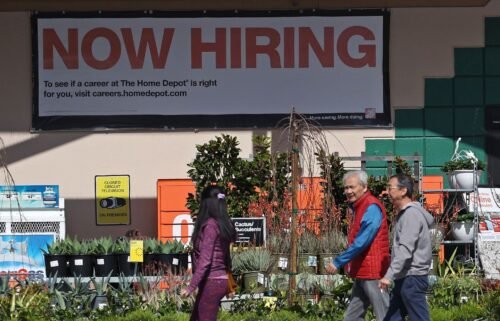Christmas trees have gotten a lot less real in recent decades, in charts
(CNN) — Next to those stockings hung by the chimney with care, it appears more likely than ever that the trimmed tree will be, well, faux.
The holiday tradition of setting up a Christmas tree has endured centuries. But this year, 77% of Americans displaying a Christmas tree say they’ll opt for an artificial one, according to a survey from the American Christmas Tree Association, an industry promotion group.
The shift to fake trees has been a steady one. Imports of artificial trees have been climbing since the mid-90s, and spiked in 2021 despite Covid-19-related supply chain issues, according to the Census Bureau, which started tracking tree imports in 1994.
What about the real trees?
As artificial trees started looking more authentic and became more accepted in homes, the natural Christmas tree industry has been in a slow decline over 40-50 years, according to Marsha Gray, executive director of the Real Christmas Tree Board, an industry trade group.
One recent pain point was the economic downturn of 2008, when the total number of real Christmas trees sold nationwide fell 34% from 19.3 million sold in 1998 to 12.8 million in 2009. Gray said this led to many Christmas tree farmers planting fewer trees, turning to other crops or going out of business entirely.
“It’s part art, part science and part crystal ball,” Gray said, noting it takes an average of seven years to grow a tree, and sometimes upwards of 10-15 years. “You really are trying to guess what’s going to sell and how much can sell 10 years from now.”
As the US crop has continued to decline, Christmas tree imports from Canada have increased. Between 2000 and 2015, an average of 2 million trees were imported each year, but this increased to 2.8 million in 2022.
Oregon tree farms shrinking
Like the industry as a whole, Oregon Christmas tree farms have been struggling in the years since 2008.
Between 2005 and 2020, the total number of tree farms in Oregon — the country’s top producer of natural Christmas trees, accounting for about one-third of sales in 2019 — plummeted from 1,590 to just 490.
“That housing bubble ended up taking out a number of Christmas tree farms,” said Tom Norby, president of the Pacific Northwest Christmas Tree Association and co-owner of Trout Creek Tree Farm in Corbett, Oregon, just a few miles east of Portland. “A lot of people were selling trees below the cost of production, and that’s just not a business model that is sustainable.”
For Norby, who had initially hoped to manage the farm from afar as an investment, the turbulence in the industry hasn’t affected his plans to continue Trout Creek. Trout Creek grows noble firs, the second most popular type of Christmas tree in the nation.
“I know what I’m planting, where I’m planting for the next five to 10 years, and it doesn’t really change,” Norby said. “For me, it’s pretty straightforward.”
For his own tree, Norby is a bit of a purist. “It is always a noble fir,” he said.
The-CNN-Wire
™ & © 2023 Cable News Network, Inc., a Warner Bros. Discovery Company. All rights reserved.


